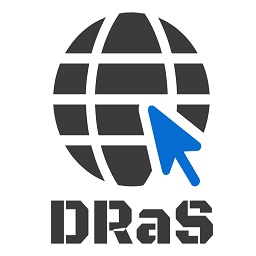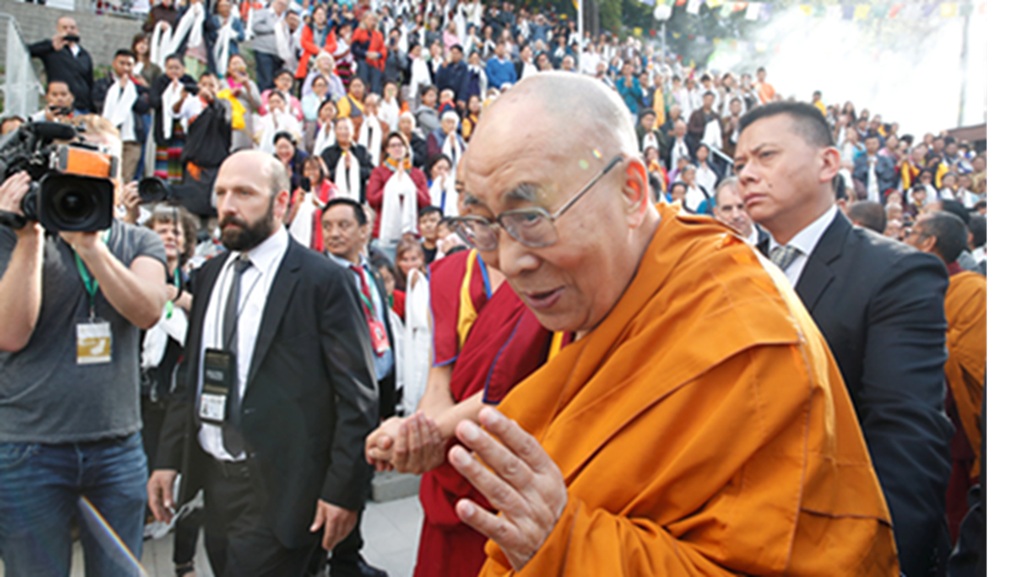Introduction
The unfolding dynamics of the United States versus China strategic standoff reshape Asia geopolitics. Especially weighing that of those on the middle level, not merely spectators to this great-power contest, South Korea, Japan, and Vietnam are gradually determining the regional order through carefully considered economic diversification strategies, asymmetric defence postures, and innovative multilateral diplomacy. This article shall discuss how these countries are employing their geopolitical positions to fortify stability, inhibit coercion, and build new roles amid the polarized realm of the Indo-Pacific. It enables us to see more clearly how these middle powers navigate through and influence the complex dynamics of regional security and cooperation.
South Korea is located in the region of the Asia-Pacific geopolitical chessboard, in which the high-stakes strategic rivalry between the United States and China is played out. With the economy deeply intertwined in China and dependent on the U.S. for security, South Korea has selectively staked out a balanced position on diplomacy and welled strategy.
The economic requirements for South Korea can hardly be denied: in 2023, China was again its biggest trading partner, dictating restraint in the face of possible economic retribution typified by THAAD ramifications. Yet nowhere has South Korea put all its economic baskets, balancing these with trade agreements such as the RCEP and turning to fledgling markets in Southeast Asia.
In the defence file, the alliance of South Korea and the United States constitutes the foundation of its security policy underlined by the presence of U.S. troops and joint military drills to counter North Korean threats. However, Seoul predicated on independence mainly by maturing its defence capabilities, from the K2 Black Panther tank to the K9 Thunder howitzer, thus positioning itself not just as a consumer but certainly as a future exporter of military technologies.
In diplomatic jargon, this rather strategic ambiguity comes out in South Korea’s conduct of its diplomatic relations in regional forums like the ASEAN Regional Forum, which allows it not to lose contact with China in meaningful ways while still holding to U.S. commitments. This is best illustrated by the inter-Korean summits of 2017-2018, where South Korea acted as the mediator, moving to fill the gaps with North Korea without upsetting its great-power allies.
Through this balancing act, South Korea speaks for the fact that middle powers CAN exert influence by carving out a middle ground between economic interdependence and security assurances; this endeavour subtly reshapes the regional dynamics in a world dominated by great-power rivalry.
Leadership in the Indo-Pacific Security Architecture by Japan
Japan has always had a historical and economic edge when it comes to Asia even while advocating, amid U.S.-China tensions, for a broad-based forum for regional security architecture. Japan shall undertake a more militaristic approach toward its aggressors by relieving itself of a fundamental traditional security framework pinned on coalitions like the U.S., India, and Australia to enhance security cooperation through the Quad.
It was under Prime Minister Abe that the idea of a “Free and Open Indo-Pacific” came into being, which centred around maritime security and economic linkages not subject to coercion. Japan has fitted this realistic vision with its increased defence budget- the first major increase in three decades- focused on acquiring Aegis destroyers and F-35 jets. Such projections indicate Japan has moved to assume an offensive posture, having the semblance of projecting power within the constitution’s confines.
Japan is active in the Quad and uses it to balance China’s maritime stringency in the East and South China Seas. Tokyo has also performed networking on multilateral scales, from the U.S.-Japan Security Consultative Committee to ASEAN+3, thus managing to place itself at the heart of security cooperation in the region.
Japan’s ODA, therefore, goes well beyond providing development assistance by enhancing its partnerships across the Indo-Pacific in infrastructure projects that serve its national interests while subtly contesting China’s Belt and Road Initiative.
Japan thus is not just reinforcing alliances but carving out its own role of stabilizing forces in favour of a rules-based order within the region in the light of these actions. This delicate threading of the needle lets Japan traverse through the complexities of great power competition and enhances its strategic agency amid one of the most contested regions in the world.
Resilience of Vietnam to South China Sea Disputes
Vietnam is in a geostrategic position in Southeast Asia, especially concerning the contentious South China Sea, signifying a country that works at reconciling resistance with diplomatic finesse. Vietnam had to fight against the intrusive, expansionist maritime ambit of China, yet it bore an indomitable spirit of resistance and some significant strategic genius.
Vietnam combines legal, diplomatic, and military means. Legally, this means that Vietnam has appealed to international law, for the most part by lodging its submission for an extended continental shelf in the United Nations in 2009 and also by participating in the arbitration against China in 2016, which, although it was not directly between China and Vietnam, set a precedent.
From a diplomatic end, Vietnam practices “bamboo diplomacy.” That means it is malleable and bent, but may not break under pressure. It is pragmatically close to China, with high-level party-to-party communications, but spreads its diplomacy internationally with a redirection of its focus toward other partners. Vietnam has deepened its relationship with the United States, particularly through the Comprehensive Partnership, and accepted U.S. naval port calls as a display of solidarity without increasing existing tensions.
Militarily, Vietnam very quietly but steadily built itself up, purely to improve counteraggression strategies against China in the South China Sea with asymmetric warfare, including acquiring modern naval vessels such as Kilo-class submarines from Russia and developing its shipbuilding capabilities(3).
Economically, Vietnam is trying to distance itself from China and is increasing its trade with other countries, such as through the Comprehensive and Progressive Agreement for Trans-Pacific Partnership, in which it positions itself as an alternative hub for manufacturing with other countries.
Vietnam’s strategy illustrates how a middle power can assert sovereignty while pushing back against coercion with a high degree of strategic flexibility. In balancing cooperation and contestation, Vietnam can not only defend its interests but also contribute to regional stability, providing a model for.
Middle Powers In Indo-Pacific
In a turnabout, the strategic manoeuvres of South Korea, Japan, and Vietnam signify a shift wherein middle powers are no longer confined to merely responding but actively shaping the Indo-Pacific security environment. These nations illustrate that amid great power rivalry in the region, middle powers will find a way to leverage their respective geopolitical roots into stability creation.
They strategically diversify economically to lessen the extent of coercion possible by other relevant powers. Thus, while they formalize their cooperation within presentist bureaucratic institutions, such operations allow them to achieve their self-interested policies, evolving economically away from the excessive tendencies of any particular power. In line with its designation, South Korea’s trade diversion from China, Japan’s investments into alternative infrastructure through its ODA, and Vietnam’s policy remake on international trade agreements like CPTPP, could be construed as proactive measures to pull away from dependence on any one additional power.
Their defence strategies also freely give themselves away. By shifting to asymmetric defence postures, such states ensure that larger neighbours will find it hard to overpower them. The advanced military technology that Japan is focusing on, Indigenous defence production by South Korea, and submarine acquisitions by Vietnam depict a commitment to self-reliance concerning security questions, thus providing them with better deterrence capabilities.
Another area of significance lies in multilateral diplomacy, in which these middle powers have come into prominence. In the leadership or pursuit of member platforms that float, for instance, the Quad, ASEAN, and others, they work towards creating a regional environment within which cooperation prevails over unilateralism. This not only amplifies their voice in shaping the Indo-Pacific environment but also sets up a mechanism with which they may oppose any such pressures exerted by great powers.
By themselves, these strategies collectively indicate that the middle powers are now proactive actors in the Indo-Pacific and are able to influence the strategic environment. Instead of passively reacting to either of the bipolar dynamics that the U.S.-China produces, they present norm-setting, stability-promoting measures that will fashion their own interests from being adversely affected by great power competition. Such an active stance will serve to provide a way for middle powers to assert agency in a divided and more broadly contested multipolar world.
Conclusion: Redefining Influence in a Multipolar Asia
The tactical moves that South Korea, Japan, and Vietnam take in reaction to the U.S.-China rivalry provide a complex portrait of the sculpture of power relations in the Indo-Pacific. These middle powers have elevated themselves from age-old buffer states or simple allies to important actors in regional stability.
The approaches taken present actionable points for the attention of policymakers and analysts alike. First, with respect to the diversification of economies, general causality may not be valid; rather, it remains a geopolitics tact under reducing dependency, hence increasing bargaining power. Secondly, asymmetric defence strategies work to create resilience that allows nations to pursue sovereignty on their soil while attempting not to overtly flare tensions. Thirdly, leadership in multilateral diplomacy reinforces this notion of coalitions in modern geopolitics; those systems working towards collective security and perhaps distributional equity can countervail the influences of superpowers.
From such paradigms, it invoke that for middle powers to move further robustly along the path forward- attune themselves to self-sufficiency economically and militarily while collectivizing their efforts to carve regional norms through diplomacy based on strong coalitions. Also, they must engage in establishing networks of cooperation that override bipolar tensions, hence enabling a region conducive to the concurrent prosperity of middle and superpowers.
The future of the Indo-Pacific will see middle powers rise to even greater importance, adapting, innovating, and leading by example in building support for the path ahead. By doing so, they gather together self-interest, stability, cooperation, and dynamism within the region. The lessons from South Korea, Japan, and Vietnam are clear – within the chess game of global politics, middle powers can very much play the role of kingmakers provided they act in forethought and strategic genius.
Title image courtesy: The Week
Disclaimer: The views and opinions expressed by the author do not necessarily reflect the views of the Government of India and Defence Research and Studies







